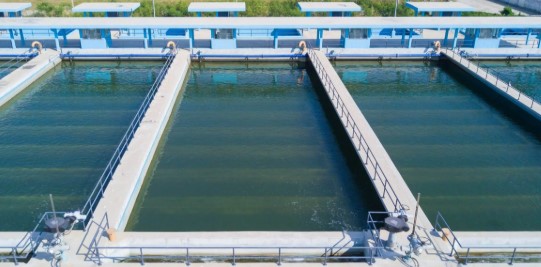Sure! Here’s a detailed blog post on the topic:
What is Filtration in Water Treatment? – A Complete Guide
Water treatment is essential to ensure clean, safe, and drinkable water for homes, industries, and agriculture. One of the most critical steps in the water purification process is filtration. This method removes physical impurities and prepares water for further disinfection or direct use.
In this blog, we’ll explore what filtration is, how it works, the different types of filtration methods, and why it’s such an important step in water treatment.
What is Filtration in Water Treatment?
Filtration is a mechanical or physical process used to remove suspended solids, particles, and some microorganisms from water. It involves passing water through a porous material (called a filter) that traps unwanted contaminants while allowing clean water to flow through.
Filtration is commonly used in:
- Drinking water treatment
- Wastewater management
- Industrial water purification
- Swimming pool cleaning systems
Why is Filtration Important?
Unfiltered water may contain:
- Dirt and sediments
- Rust, sand, or clay particles
- Microorganisms like bacteria and protozoa
- Organic material (plant debris, algae)
- Turbidity (cloudiness)
Filtration helps:
- Improve water clarity
- Remove harmful pathogens
- Protect downstream equipment (e.g., RO membranes)
- Make disinfection (like chlorination or UV) more effective
How Does Filtration Work?
The process of filtration involves forcing water through a filter medium. The medium traps and removes particles based on:
- Size (mechanical straining)
- Surface adsorption
- Biological action (in slow sand filters)
Different filtration systems use different filter materials and operate under different pressures or flow rates, depending on the specific application.
Common Types of Filtration in Water Treatment
1. Sand Filtration (Rapid and Slow)
How it works: Water passes through layers of sand and gravel that trap particles.
- Slow sand filtration: Used in rural or small-scale systems. Also includes biological filtration through biofilms.
- Rapid sand filtration: Used in large municipal systems. Requires backwashing.
Removes: Sediments, turbidity, microorganisms
Pros: Simple, cost-effective
Cons: Regular cleaning needed, limited chemical removal
2. Cartridge Filtration
How it works: Water flows through a cylindrical filter made of paper, cloth, or synthetic materials.
Removes: Sediment, dirt, rust, and sometimes chlorine (if carbon-based)
Pros: Easy to install, compact
Cons: Needs frequent replacement, not suitable for large volumes
3. Activated Carbon Filtration
How it works: Uses highly porous carbon that adsorbs organic chemicals, chlorine, and some toxins.
Removes: Taste, odor, chlorine, VOCs, pesticides
Pros: Improves taste and smell
Cons: Doesn’t remove microbes or heavy metals
4. Multimedia Filtration
How it works: Water flows through multiple layers of filtration media (e.g., sand, gravel, anthracite).
Removes: Fine particles, sediments, turbidity
Pros: Higher efficiency than single-media filters
Cons: Requires space and maintenance
5. Membrane Filtration (Microfiltration, Ultrafiltration)
How it works: Uses membranes with microscopic pores to separate contaminants based on size.
- Microfiltration (MF): Removes bacteria and suspended solids
- Ultrafiltration (UF): Removes bacteria, viruses, and colloids
Pros: Very fine filtration, compact systems
Cons: Costly, prone to fouling, requires pressurization
6. Pressure Sand Filtration
How it works: Similar to rapid sand filtration, but done under pressure in enclosed vessels.
Used in: Industrial applications, swimming pools, cooling towers
Pros: Compact, fast flow
Cons: Expensive and needs backwashing
Comparison Table
| Filter Type | Removes | Best For | Limitations |
|---|---|---|---|
| Sand Filter | Sediment, microbes | Rural & municipal systems | Limited chemical removal |
| Cartridge Filter | Dirt, rust, sediments | Household systems | Frequent replacement |
| Activated Carbon | Odor, chlorine, VOCs | Drinking water systems | Doesn’t remove pathogens |
| Multimedia Filter | Fine particles, turbidity | High-efficiency systems | Space and maintenance required |
| Membrane Filter | Microbes, solids | Hospitals, labs, industries | Expensive, clogging risk |
Maintenance of Filtration Systems
Regular maintenance is vital for effective filtration:
- Replace cartridges and membranes as per manufacturer guidelines
- Backwash sand filters weekly (or as needed)
- Clean carbon filters to avoid clogging
- Monitor flow rate and pressure changes
Final Thoughts
Filtration is a crucial first step in any water treatment process. It not only makes water clearer and more appealing but also enhances the effectiveness of disinfection methods used afterward. Whether you’re managing municipal water, an industrial plant, or just your home’s drinking supply, choosing the right filtration method ensures clean, safe water for all uses.
Clean water starts with smart filtration.
